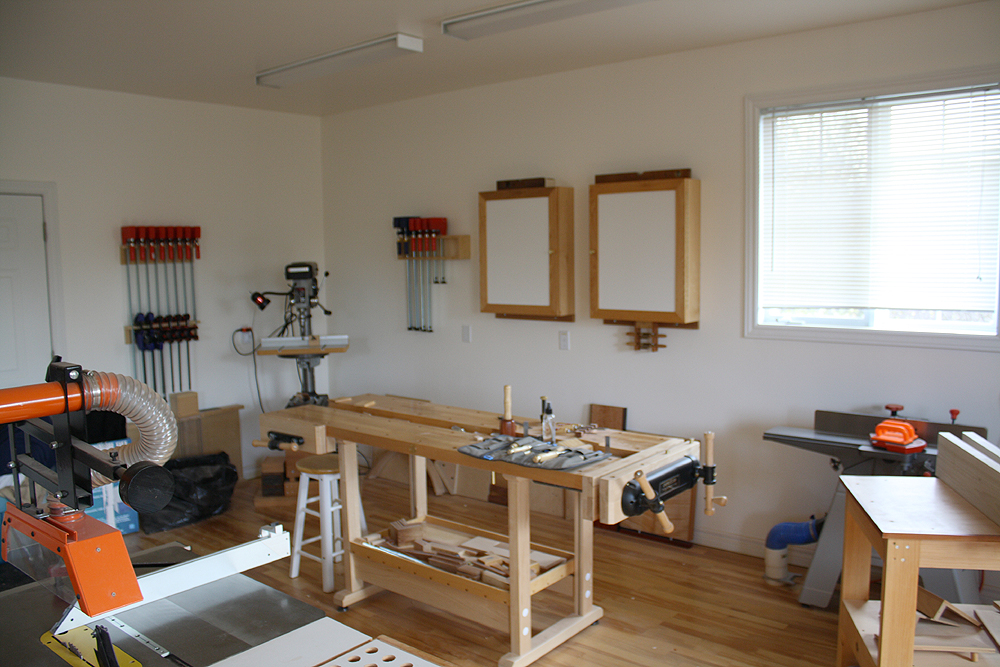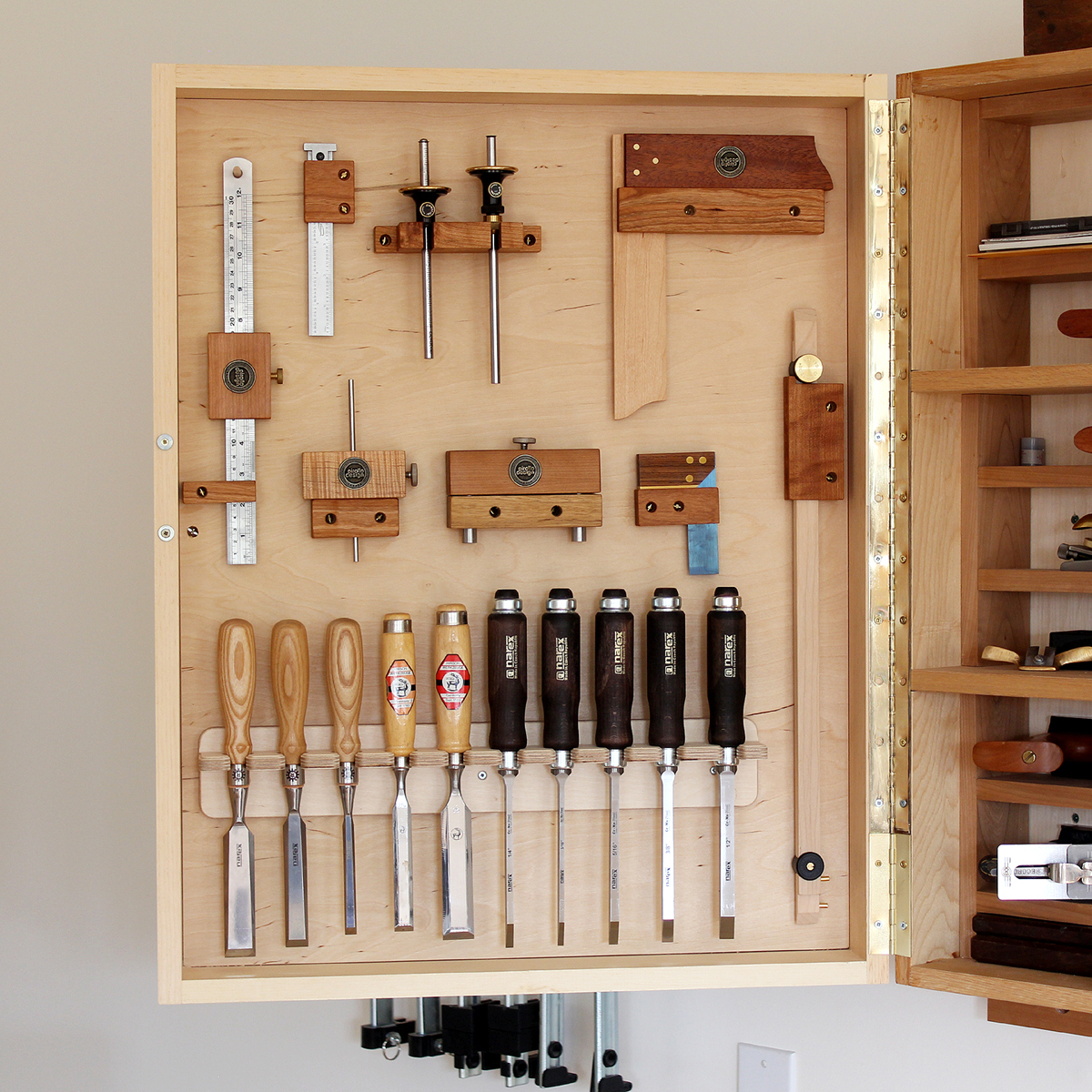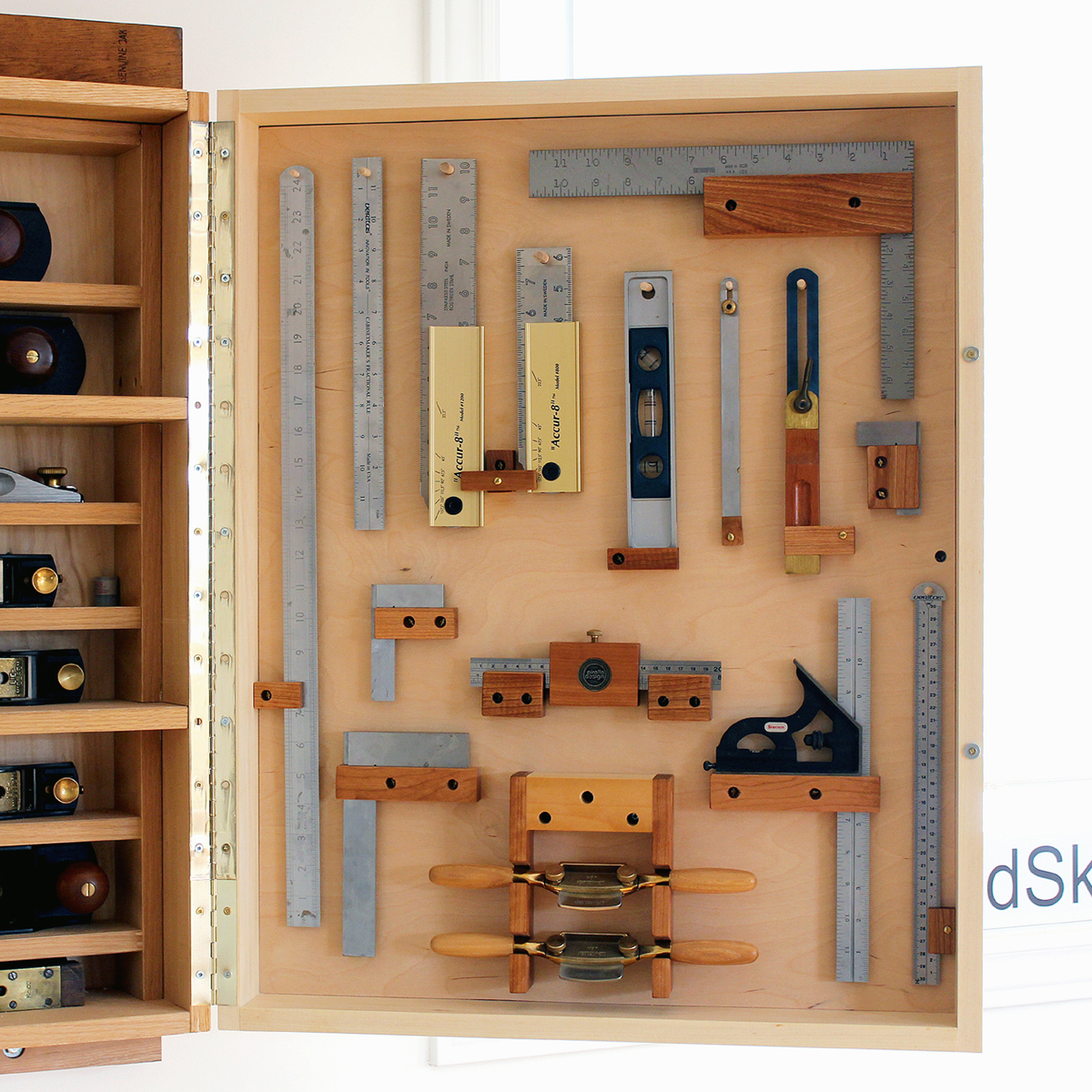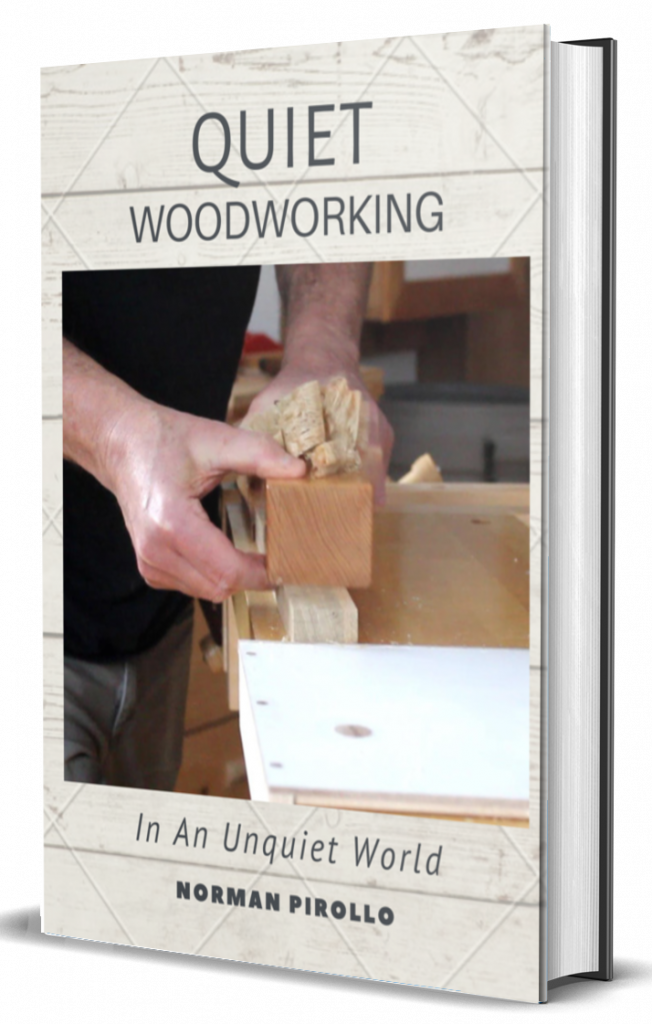Several years ago when setting up my new workshop, I built a pair of hand plane cabinets. The cabinets were designed to house hand planes exclusively. At the time, I had relatively few other tools so the design was appropriate. It did cross my mind to have deep doors to keep other measuring and marking tools, but I was just setting up shop and this could wait. Instead, I opted for simple frame and panel doors.
The premise was to keep dust away from hand planes in the cabinets. A feature of the original doors were dry erase front panels. These panels served me well over the years as I could maintain a list of steps in a furniture build and check them off during a build. Earlier images below show frame and panel doors with dry erase panels. The door frames were oak.


Fast forward to December 2020. Over they intervening years, I acquired a good selection of measuring and marking tools. Since I had little dedicated space to store these tools, I would leave them on my workbenches. The problem with this approach is the tools sometimes get buried under work in progress. So it became an endless search for the tool I needed. Sometimes I would instantly spot it, other times it became a time-consuming chore to find the tool. This began to slow me down as well as frustrate me. I had to do something and revisited an earlier plan to build up the hand plane cabinets with deep doors. As well as adding the new, deeper doors, I added a center section to house new hand plane additions. This section was custom as it had to fit perfectly between the existing pair of hand plane cabinets.
The new, deep doors would be strong yet light. I also wanted to incorporate the existing dry erase panel into each door. Another criteria was not too deep a door to maintain the work space to the workbench directly ahead. A few days later and with some ingenuity I had the new doors built. The original doors were disassembled to retrieve the dry erase panels (re-purposing). The new door dimensions were identical to the old frame and panel doors aside from the increased depth. I also allowed an extra thickness behind the dry erase panel to attach tool holders. I had just completed a furniture project so this new shop addition was a nice, short project that only took 3-4 days to complete. It was an enjoyable build and used cherry offcuts I had accumulated over the years. New door images below.

The individual tool holders are created from cherry offcuts I had lying around. This part was actually fun, coming up with clever ideas to hold each of the tools. A couple of detail images follow.


The exteriors of the new doors are shown below. The dry erase panels are carried over from the original oak frame and panel doors. As well, the small brass pulls and the piano hinges are carried over from the original cabinets. I am very pleased with this hand tool cabinet upgrade! A short video of the new hand tool cabinets available at WoodSkills




